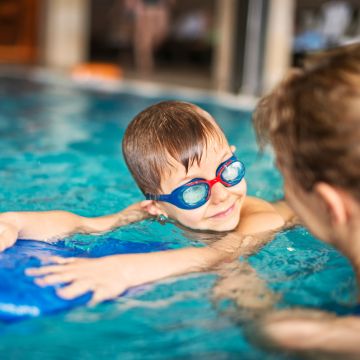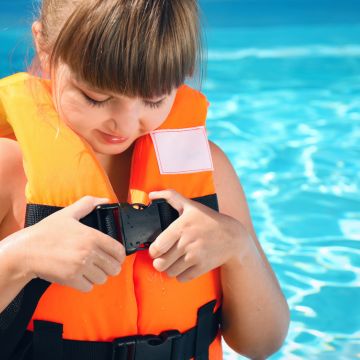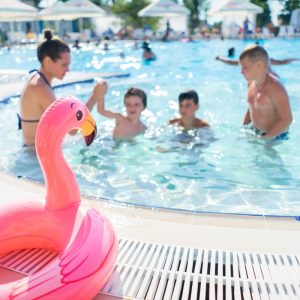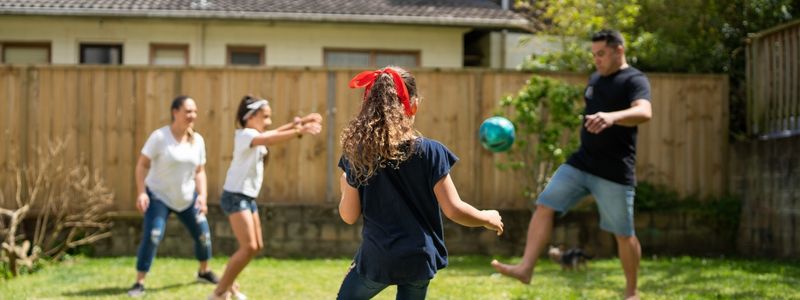Water parks in Houston offer families a thrilling escape from the heat, with exhilarating slides, lazy rivers, and splash zones that promise hours of fun. However, ensuring the safety of your little ones is crucial, especially when navigating the bustling, water-filled environment. Before heading out, it’s essential to familiarize yourself with the park’s layout, including shallow areas, designated toddler zones, and the location of lifeguards. Dressing your child in brightly colored swimwear can make them easier to spot in crowded areas, while equipping them with appropriate flotation devices adds an extra layer of protection. Additionally, setting clear rules for water play, such as staying close to an adult and avoiding running on slippery surfaces, can help prevent accidents. Staying hydrated and taking regular breaks are also important to keep kids from becoming overly tired or dehydrated in the sun. By combining these safety measures with constant supervision, you can ensure that your family enjoys a day of excitement and adventure at Houston’s water parks, all while keeping your toddlers safe and happy.
See our list of water parks in Houston
Supervision is Key
The most crucial aspect of water park safety for toddlers is constant supervision. Designate an adult guardian to keep a watchful eye on the children at all times. Avoid distractions like phones or books – focus solely on the kids. Rotate supervision duties among adults to prevent fatigue and ensure heightened alertness.
Water Safety Education
Teaching your child to swim at an early age is one of the most effective ways to ensure their safety at water parks and in any aquatic environment. Swimming lessons equip toddlers with essential skills such as floating, treading water, and basic strokes, giving them the confidence and ability to navigate water more safely. Early swim education also helps children develop a healthy respect for water, reducing their likelihood of taking unnecessary risks. Additionally, reinforcing basic water safety rules before arriving at the park can make a big difference in preventing accidents.

Teach your toddlers the importance of staying in designated areas, understanding the dangers of running near pools, and knowing never to dive into shallow water. Simple, clear instructions like “walk, don’t run” and “always hold an adult’s hand” can help them internalize safe behaviors. By combining these foundational swimming skills with a strong understanding of water safety rules, your child will be better prepared to enjoy the fun and excitement of water parks while staying safe. Swim Lessons In Houston
Choose Appropriate Attractions
Select water park attractions suitable for toddlers. Look for designated kiddie pools with shallow water and gentle slides. Avoid attractions with large crowds or fast-moving water, as these may overwhelm young children. Opt for areas designed for toddlers to ensure a safe and enjoyable experience. We have collect a list that we thin is the 10 Top American Water Parks
Life Jackets and Flotation Devices
Even if your toddler can swim, it’s wise to have them wear a properly fitted life jacket or flotation device. These safety gears provide extra protection, especially in crowded or deep water areas. Ensure the life jacket is Coast Guard-approved and fits snugly without restricting movement.

Sun Protection
Protect your toddler’s delicate skin from the sun’s harmful rays by applying sunscreen liberally and frequently. Choose a waterproof sunscreen with a high SPF rating and reapply every two hours or more often if they’ve been swimming. Additionally, dress your toddler in UV-protective swimwear, including a wide-brimmed hat and sunglasses.
Hydration and Rest
Toddlers can quickly become dehydrated or fatigued while playing in the sun. Encourage regular breaks in the shade for rest and hydration. Pack plenty of water and healthy snacks to keep energy levels up throughout the day. Watch for signs of exhaustion or overheating, such as flushed skin, excessive sweating, or lethargy, and take immediate action if you notice any symptoms.
Establish a Meeting Point
If you and your toddler become separated, establish a designated meeting point as soon as you arrive at the water park. Choose a highly visible location near the park entrance or information center. Teach your child to seek out a lifeguard or park employee if lost and unable to find the meeting point.
Stay Alert for Hazards
Staying alert for hazards at a water park is key to ensuring a safe and enjoyable experience for your family. Here are some steps to help you stay vigilant and proactive:

- Scan the Area Regularly: Before settling in, take a moment to survey your surroundings. Look for any potential hazards such as wet or slippery surfaces, uneven ground, or areas where water might pool unexpectedly.
- Check for Sharp Edges: Be mindful of sharp edges or rough surfaces around pools, slides, and other attractions. These can pose a risk, especially for younger children who may not notice them. Encourage kids to be cautious when moving around these areas.
- Monitor High-Traffic Zones: Areas near entrances, exits, and popular attractions can become crowded and chaotic. Keep an eye out for any obstructions or hazards that could cause trips or falls, and make sure your children are aware of the importance of moving carefully in these spots.
- Avoid Slippery Surfaces: Wet surfaces are common in water parks, and they can become extremely slippery. Teach your children to walk, not run, and be particularly careful near pools, splash zones, and changing areas where the ground is likely to be slick.
- Report Concerns Immediately: If you notice any safety concerns, such as loose tiles, malfunctioning equipment, or other maintenance issues, report them to park staff right away. Prompt action can prevent accidents and contribute to a safer environment for everyone.
- Stay Close to Lifeguard Stations: Position yourself near lifeguard stations whenever possible. Not only does this ensure a quicker response in case of an emergency, but it also gives you peace of mind knowing that trained professionals are nearby.
- Educate Kids on Hazards: Make sure your children are aware of potential hazards and understand the importance of avoiding risky behavior, like running or playing too close to the pool’s edge.
By following these steps and maintaining a proactive approach to safety, you can significantly reduce the risk of accidents and help create a safer environment for everyone at the water park.
Emergency Preparedness
Familiarize yourself with the water park’s emergency procedures and the location of first aid stations. Keep a fully stocked first aid kit in your bag, including basic supplies like bandages, antiseptic wipes, and pain relievers. Review CPR and basic life-saving techniques, and know how to respond in an emergency.
Lead by Example
 Finally, lead by example and demonstrate safe behavior for your toddler to emulate. Follow all posted rules and guidelines, including height and age restrictions for attractions. Show respect for other guests and lifeguards, and encourage your toddler to do the same. By modeling responsible behavior, you can help instill lifelong water safety habits in your child.
Finally, lead by example and demonstrate safe behavior for your toddler to emulate. Follow all posted rules and guidelines, including height and age restrictions for attractions. Show respect for other guests and lifeguards, and encourage your toddler to do the same. By modeling responsible behavior, you can help instill lifelong water safety habits in your child.
In conclusion, water parks can provide endless entertainment for toddlers and families, but safety should always be the top priority. Following these essential guidelines and staying vigilant can help ensure a fun and safe experience for your little ones at the water park. So, slather on the sunscreen, grab those floaties, and prepare for a splashing good time!




